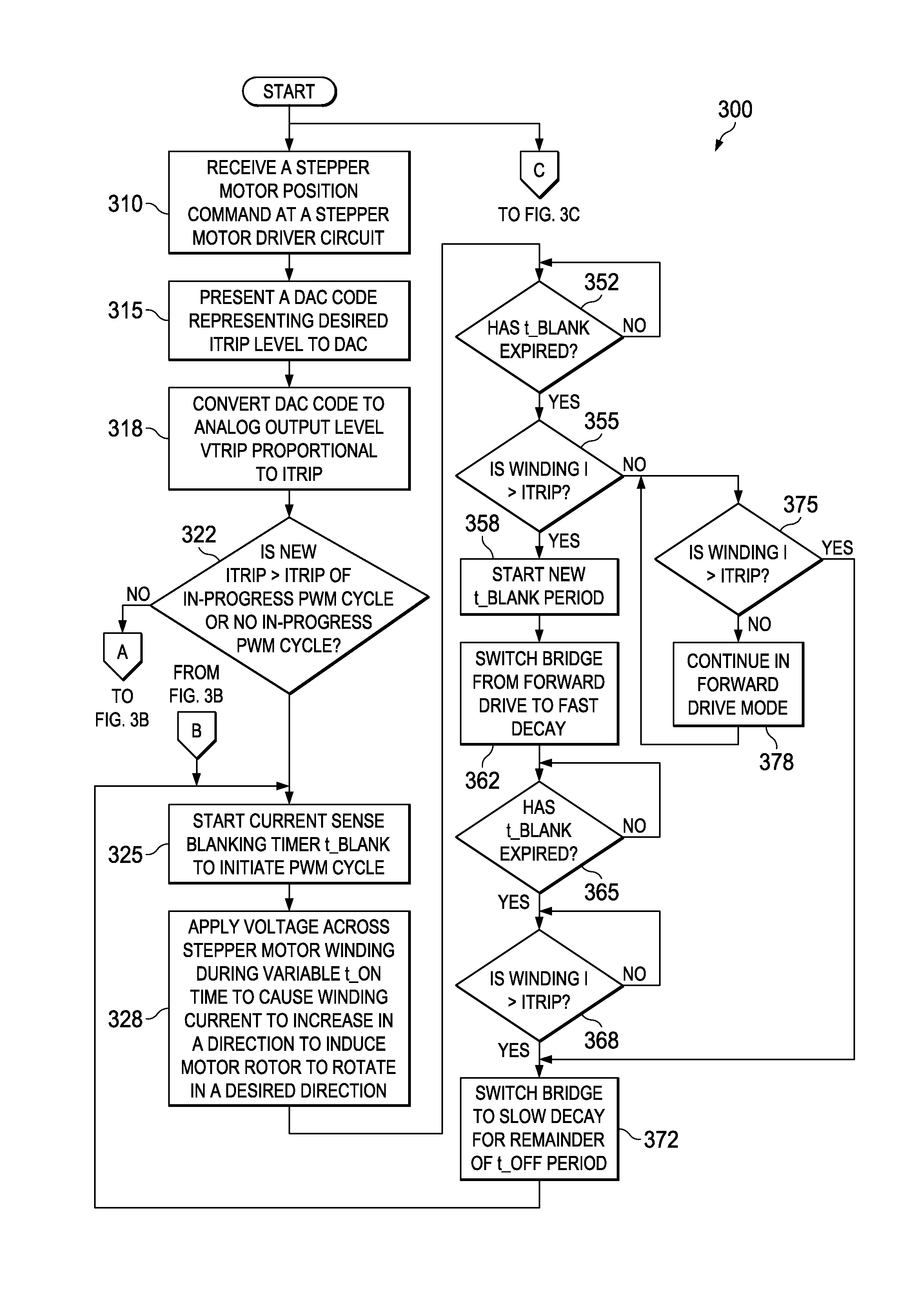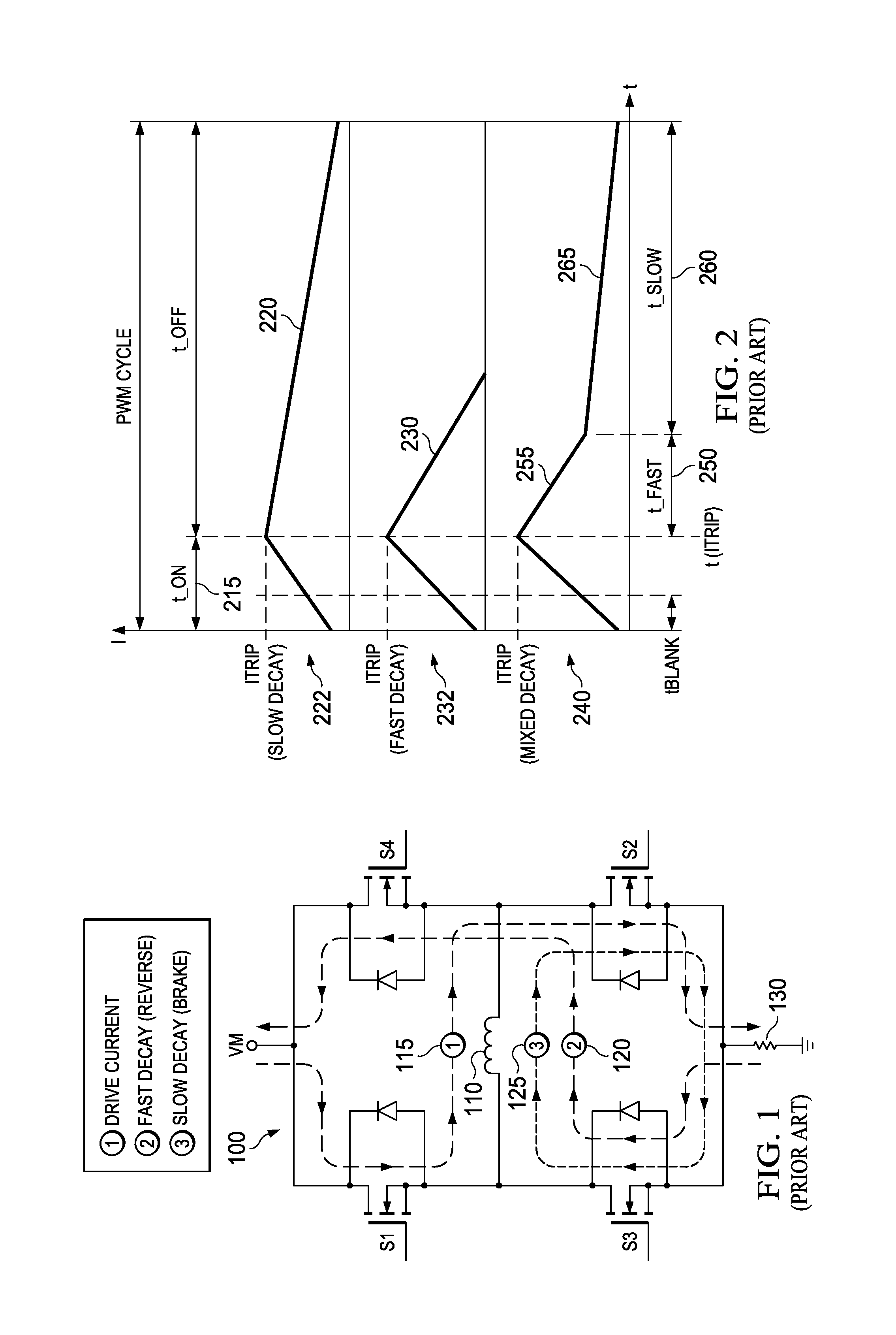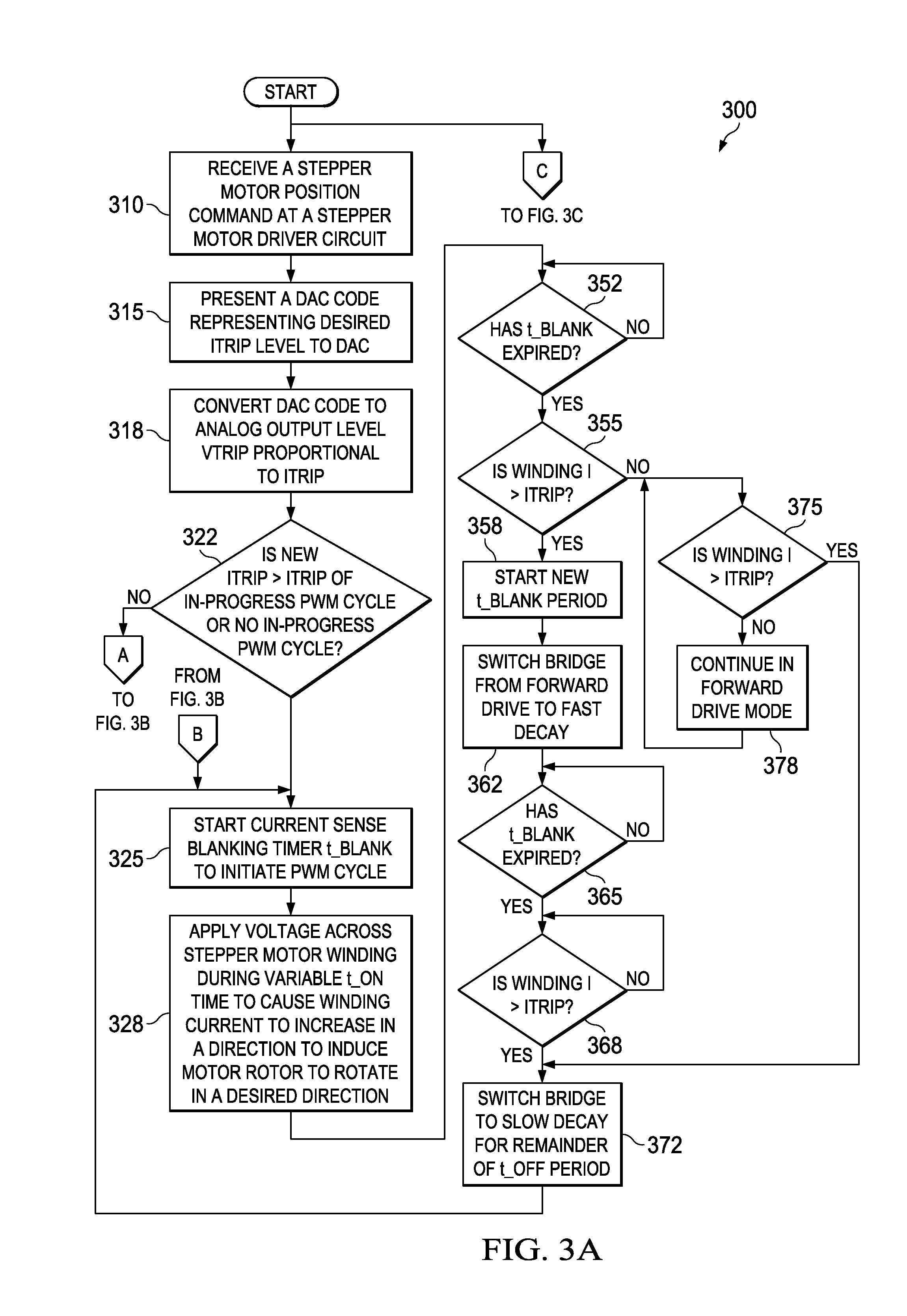Dynamic mixed-mode current decay apparatus and methods
a mixed-mode current and decay apparatus technology, applied in the direction of electrical apparatus, control system, dynamo-electric converter control, etc., can solve the problems of slow decay mode, limited micro-stepping resolution, and limited micro-stepping resolution for a given stepper motor configuration, so as to reduce the variation of winding current
- Summary
- Abstract
- Description
- Claims
- Application Information
AI Technical Summary
Benefits of technology
Problems solved by technology
Method used
Image
Examples
Embodiment Construction
[0028]FIGS. 3A-3C are a flow diagram illustrating a method 300 of stepper motor winding current regulation according to various example activities associated with the invention. Some or all of the activities of the method 300 may be carried out by embodiments of an apparatus described further below or other apparatus. The method 300 may include generating a sequence of DAC codes at an indexer. The sequence of DAC codes corresponds to a desired shape of a stepper motor winding current waveform to be used to move a rotor of the stepper motor from a current position to a new position. The method 300 may also include sequentially presenting the sequence of DAC codes to one or more DAC inputs. The portion of the method 300 described below focuses on activities associated with generating PWM cycles to regulate winding current corresponding to a particular DAC code. The method 300 as described below also includes responding to changes in regulation set-point resulting from a transition fro...
PUM
 Login to View More
Login to View More Abstract
Description
Claims
Application Information
 Login to View More
Login to View More - R&D
- Intellectual Property
- Life Sciences
- Materials
- Tech Scout
- Unparalleled Data Quality
- Higher Quality Content
- 60% Fewer Hallucinations
Browse by: Latest US Patents, China's latest patents, Technical Efficacy Thesaurus, Application Domain, Technology Topic, Popular Technical Reports.
© 2025 PatSnap. All rights reserved.Legal|Privacy policy|Modern Slavery Act Transparency Statement|Sitemap|About US| Contact US: help@patsnap.com



